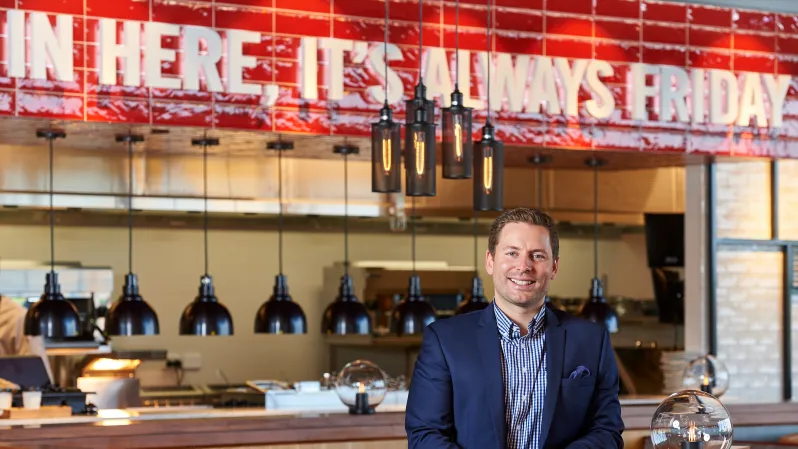
TGI Fridays ups the ante on premium store experiences to capitalise on dine-in’s expected resurgence
Signature Hospitality Group (SHG) CEO James Sinclair also reveals new details on how its digital transformation informed its growth strategy.
Roadside restaurants in high street locations suited for click and collect and food-to-go will be a key part of TGI Fridays’ portfolio in Australia over the coming years, expecting its growing use of off-premise channels to drive growth despite the lion’s share of profits coming from dine-in.
“Most of all TGI Fridays historically in Australia the past 25 years have been developed around and within shopping centers,” Signature Hospitality Group (SHG) CEO James Sinclair said.
“But often, there is a longer path of travel than what you're seeing in a high street location and a standalone [restaurant] so having a mixture of our portfolio over the next decade is something we expect to see.”
The company is in the process of doubling its 16-strong network, eyeing to have 30 TGI Fridays restaurants by 2024. This financial year through to June 30, it anticipates around $20 million in capital expenditures towards new bills, refurbishments, and expansion for the American chain and fellow SHG brand The Sporting Globe.
It recently opened its third Perth restaurant, located in Joondalup, and plans to focus on growing in NSW and QLD, including sites in Mount Druitt and the Sunshine Coast.
Whilst restaurants are now allowed to fully operate, the group —forced to quickly pivot to delivery during the height of the lockdowns last year— will continue its focus on delivering contactless digital ordering across its stores, seeing how 50% of all their transactions are now online. They are also piloting delivery also through our own platform using third party drivers.
Its loyalty program, also shared with The Sporting Globe, now boasts over half a million users.
“We have some guests that are ordering some parts through the app and sometimes through at the bar. We've worked really hard to ensure that the user experience can be as seamless as possible so that we are completely agnostic and [that] it's an omnichannel experience,” he said.
This approach also applies to how the company’s examining their current format, with Sinclair saying they have been expanding space to accommodate to-go orders. “We've been thinking about seating areas for people waiting for to-go [orders], how we engage with delivery drivers, and certainly new restaurants that we build.”
Al fresco areas, where relevant, will also be activated for customers in need of feeling safe when dining-in. Sinclair also confirmed they will pilot a company funded trial of rapid antigen testing as an additional safety measure for staff.
TGI Fridays is also expanding in the plant-based category, with SHG looking at substitute products for chicken and beef.
“There is NPD [new product development] that will occur over the next 12 months around that space for sure. We've also seen really high growth in non-alcoholic cocktails,” Sinclair noted,
The chain is also about to launch a new kid's menu offering “healthier” options. Reduction of plastics is also a key focus, he added.
Expecting a boom in dine-in next year, Sinclair also expects premiumization of experiences inside the stores themselves, citing consumers’ “pent up” savings and demand to socialise.
“Premiumization is continuing and people are wanting to have ‘wow’ experiences,” he said. “I think when you combine that huge amount of pent up savings with the demand of those things that we crave, we're going to see a real period of boom in a very positive 2022 in places where we've got successful vaccination strategies and safe reopening plans.”
Whilst industry still has some uncertainty around lockdowns, Sinclair believes the sector will see talent, predominantly from overseas, returning.
“We just need a really clear pathway to provide that job security,” he said.























